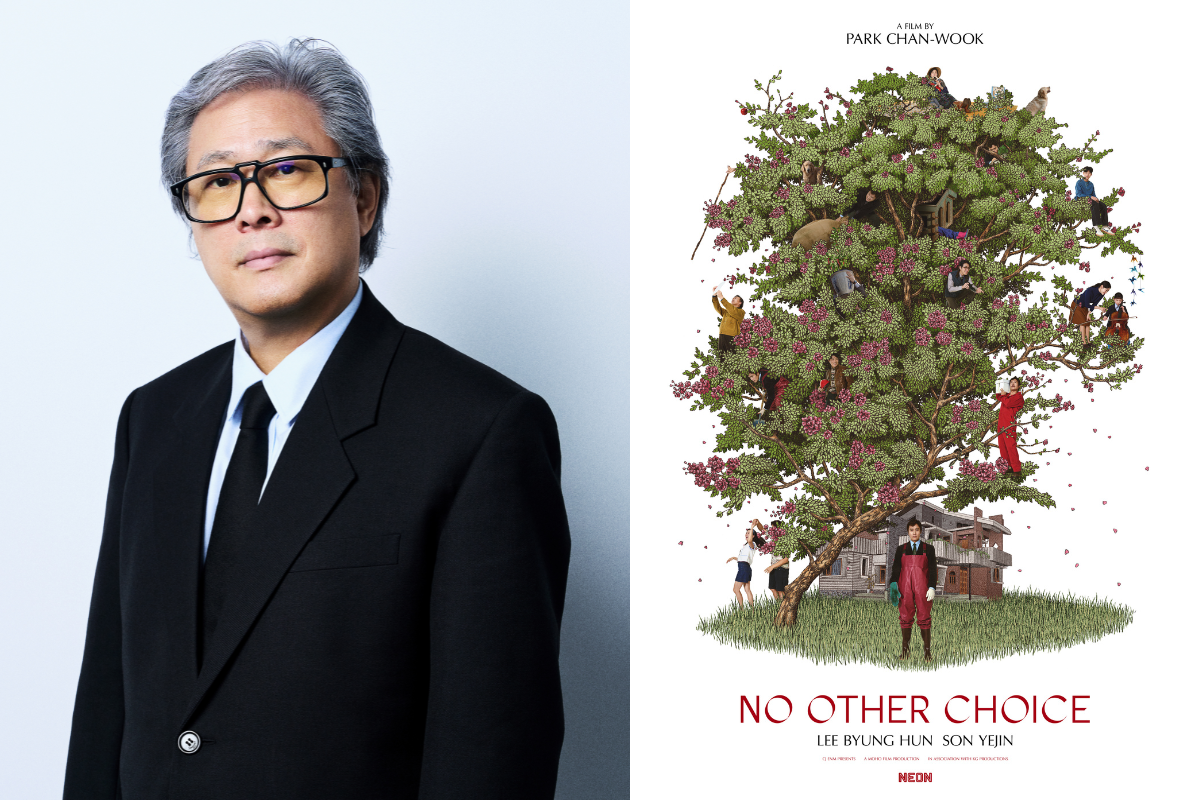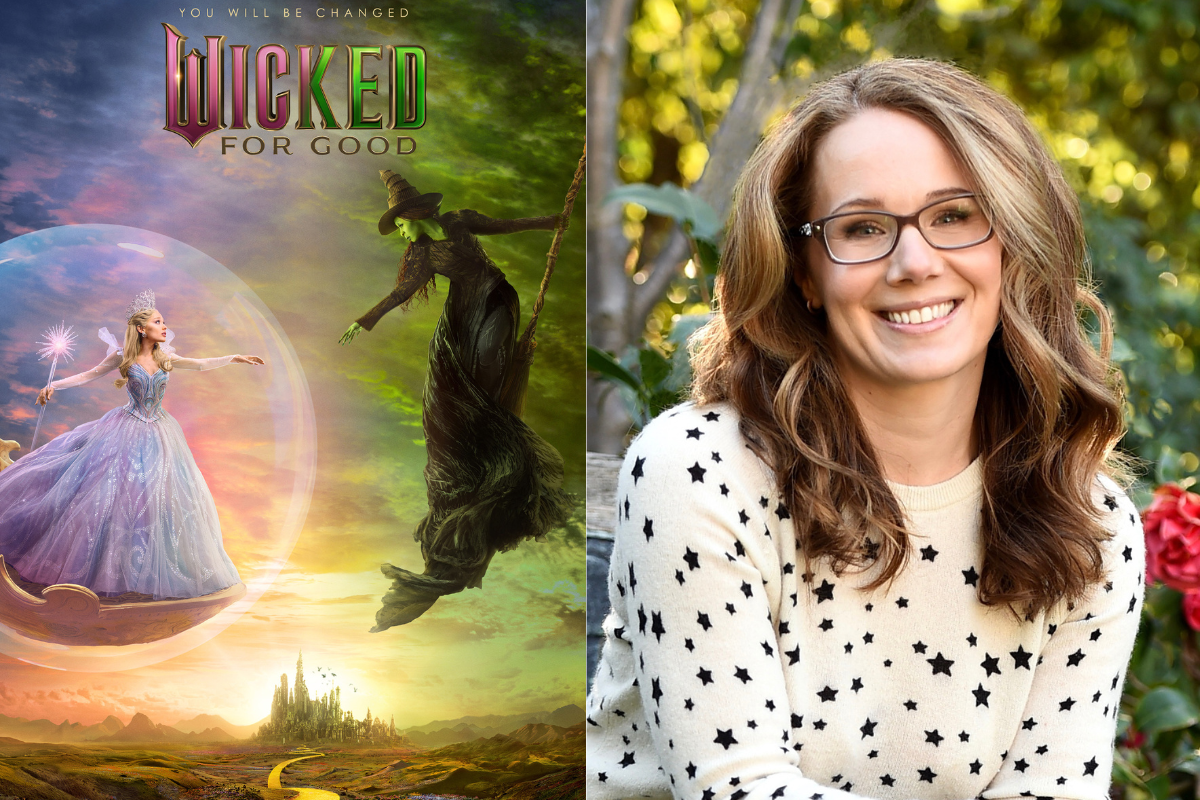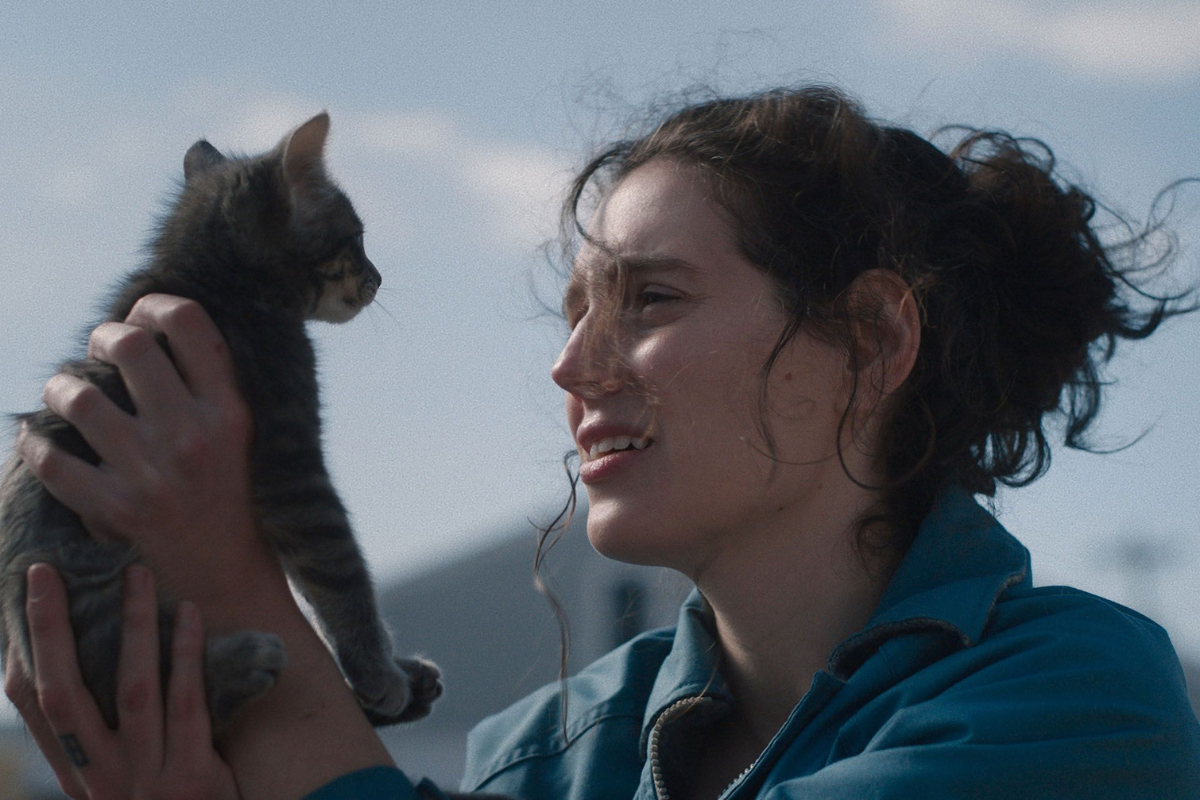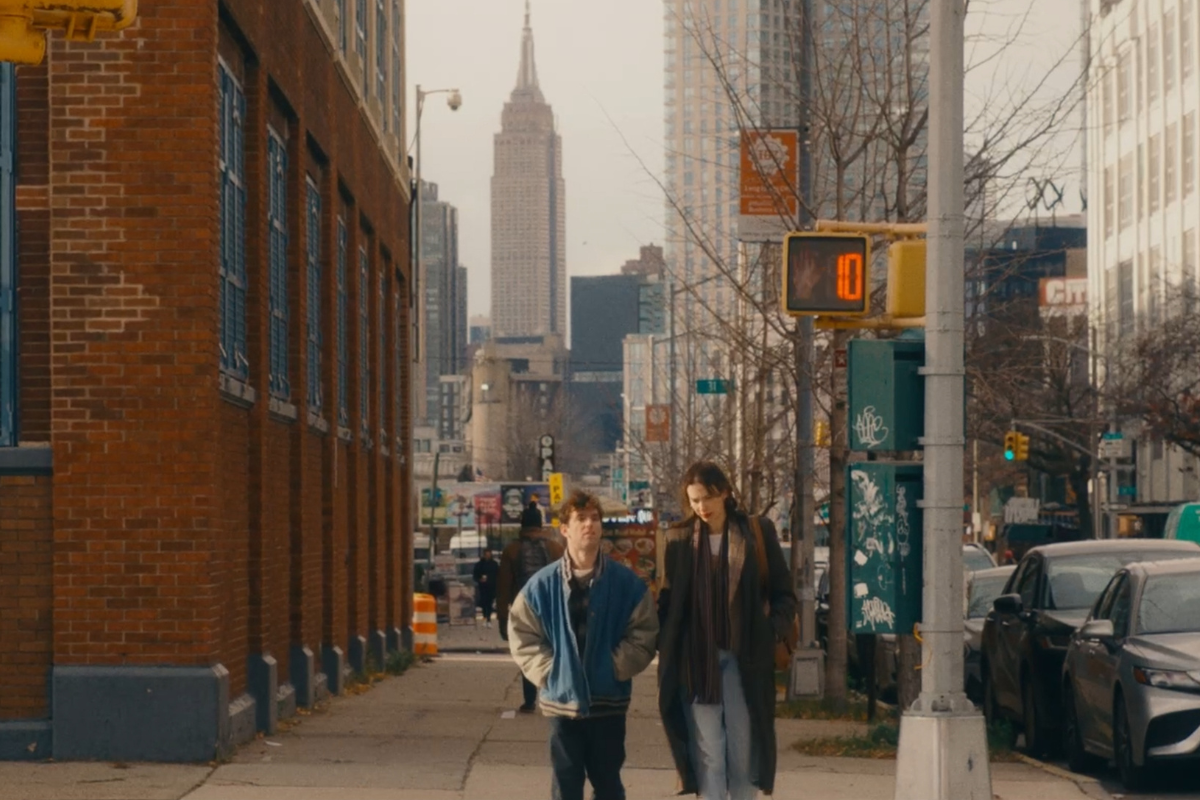Different Formats, Same Story: A Conversation with ‘The Stranger’ Writer and Director Veena Sud
Veena Sud recently spoke with Script about why she said “yes” to Jeffrey Katzenberg as a creator, recutting the sequences into a feature narrative framework, the importance of casting, how her former careers influenced her storytelling, and so much more!
New to Los Angeles, a rideshare driver Clar (Maika Monroe) picks up Carl (Dane DeHaan) from a home deep in the Hollywood Hills. What begins as a routine ride turns into Clare's worst nightmare: a twelve-hour fight for survival through the city's seedy underbelly. Carl is not the passenger Clare thought he was, and Clare is not easy prey.
This is a particularly unique case that storyteller and filmmaker Veena Sud found herself in – full copyright ownership of her TV series, that would be produced and released. This said series, The Stranger, was a short format series, running at approximately 10 minutes over the span of 13 episodes, that streamed on Quibi in 2020. Knowing that this story would have a future at some point in time, Veena came in prepared - locked and loaded - with a clear vision. Jump cut to four years later, and The Stranger is reborn and recut as a full-length feature.
Veena Sud recently spoke with Script about why she said “yes” to Jeffrey Katzenberg as a creator, recutting the sequences into a feature narrative framework, the importance of casting, how her former careers influenced her storytelling, and so much more!
This interview has been edited for content and clarity.
Sadie Dean: This is essentially your fourth rewrite on this story going back into post. What was the impetus behind recutting the show to a feature?
Veena Sud: Essentially, when I first met with Jeffrey Katzenberg, about joining the Quibi project, he said a very important thing for me as a filmmaker and a writer, which is, 'you will own copyright.' So what that meant for me is, you know, of course, I wanted to participate in the Quibi launch, I was really excited about it for artistic reasons…But I was really excited about what owning copyright means for a screenwriter and for a director - and outside of the indie world I don't even know what the division of copyright is when the financiers come in, but it's unheard of in television. And even when something dies, no one gets the thing that they've been writing for two years back.
And so, when Jeffrey said that, it just first of all, and second all, what does that mean? And what that meant was, there's so much to be done in the future - can make it into this 10-minute new thing, I can then reformat it to do blankety-blank. And the math made sense. And the story made sense that it then can go into a feature… the possibility to own my work then created the impetus to tell a specific type of story that I hadn't told before.
Sadie: During that recutting phase, were there any TV beats that surprisingly worked or maybe didn't work in a feature narrative framework?
Veena: With television, the structure of classic television and the structure of classic film, there's sequences in both, but they come out at different places. And film is 90 minutes, and a television show can go on for 200 years. So, every episode of television, you know, and it's changed since the golden age of television, which started during Mad Men on AMC, and we go out at a very specific kind of emotional moment. And this story did beg for that - it did beg to go out on some sort of cliffhanger. And not an artificial one. I really wanted it to feel, not like 90s TV where you go out and the actors are making faces. I wanted it to feel like come back tomorrow, come back next week - 10 minutes is not a lot of time to fall in love with something. So, the plot itself had to be interesting enough to return to.
But the challenge of that then is, it's 10 minutes, and I can't keep doing the same thing. Sixty-minute shows you can kind of do the same thing, because people forget about what you did on the other episode to get out of it. And there is, as you know, this interesting amount of repetition of a beat, but I couldn't do that here. So, I had to do things that were a little bit different that were about the predator, that were about the methods of the predator, that were surprising, that were about our hero that was unaffected, and I don't want to give it away...but it's like flipping, flipping, flipping, flipping without being repetitive was the biggest challenge on the TV show.
And then turning it into a feature, the 10-minute sequences made sense. But then what had to happen is, I had to, me and my editor Phil Fowler, had to lightly tread from scene to scene between the two episodes, otherwise, it would just feel like giant punches in the face. That is where I think most of the recutting happened in between, quote, unquote, the episodes to feather in the next and the next, and the next - that was very technical. There is no secret footage that you're gonna see here…I think it goes from being a haiku to being an epic poem, which offers different experiences.
Sadie: The character work that you do in this and staying within Clare's POV is really well done. And on top of that, you’re also giving the audience these breadcrumb clues to collect along the way without, like you said, punching us right in the face with it. What was your process behind breaking all of that?
Veena: I have to give a lot of credit to the actors, because without the right actor, and without an actor who can bring all of that nuance to what you're trying to tell on the page, good luck, no matter how good the writing, it doesn't matter. So again, super lucky to have this cast. And that is so important. I think as writers who are also doing many other things now in the showrunning world – you have to be very conscious of how important the casting process is.
In terms of creating the character of Clare, a big part of this was just knowing the essence of who she is and what needs to change in order for her to survive this night. And to survive this night requires a type of steely 'Don't fuck with me, motherfucker' rage, that this woman at the beginning of the story was too afraid to touch in herself. And so, this all kind of started to foment around MeToo, Quibi was I think [launched in] 2019 - and so, kind of in the heart of it, and the height of it, and there was so much anger. And I really wanted to tell a story and I continue to want to tell stories about female rage, deservedly so. So I feel like there's a real sense of anger that has to be arrived at and then unleashed. That was the tidal wave that kind of pushed the character through the story.
And then on top of that tidal wave that had been stymied time and time again, because of her history, because of what had happened to her that we find out over the course of the story, that even she, her voice, her literal voice, even no matter what she says, she knows no one will believe her. And I mean, welcome to womanhood, right, [laughs] so it doesn't matter at the end. I wanted it not to matter that anyone believed her, I wanted her to know that this is what she could do at the end, to shut this motherfucker down.
Sadie: And I works so well. I’d love to talk about your writing process and finding the stories you want to tell. Do you typically start with an idea of what the story can be, is it framed around a current event, or maybe a character in crisis?
Veena: I mean, in this particular story, the form actually dictated the entire story. So, going back the first meeting with Jeffrey Katzenberg…this is an artistic challenge, and how to tell a story vertically versus horizontally. How do you tell a story on a vertical frame, which still may be the way we start looking at things in the future, as the phones get embedded in our brains. But the idea of we are so used to looking at landscape screens, what would it be like? It's being told to tell something in a different way that you've never done before. And that was what was exciting.
So, thinking about the vertical screen was where the story came, because what I realized very quickly is we have two eye cones left and right, and that's why we have horizontal imagery, because that's how we see. And if we are just going to cut that off and make it vertical, it'll feel intrinsically suffocating. We'll feel like we're not doing other things. And so, Paul Yee, my DP, and Jenny Möller, the production designer, we talked about, what do we have to put in the frame to make it interesting. So for me, before we went into production, I just was conceptualizing the idea, I thought, ‘lots of movement,’ the camera had to be behind her and following her, we've got to feel the depth of the world, we don't have left and right, but we've got A and B, right. And we started to call it Z depth, when we're shooting, like what's deep in the frame? And where are we going to get there? And then that means the environment then has to be compelling. It obviously can't be a room that you're sitting in talking endlessly.
And even the way the angles are shot in the gas station, we pushed the candy aisles really close together, in the train car, it has very close kind of chairs so you feel the lines as he's running through there, the lights at the top, a type of LA noir that we've never seen before with Union Station, the historic parts of Los Angeles that usually don't make it on the screen. All of that - where's the novelty, where's the depth, and how to basically have the audience feel like they're on a journey when they can't see as much as they're used to seeing.
Sadie: How much prep work did you have to do all of that?
Veena: A lot. Because first of all, completely new concept. Now we're covering lower than we usually cover and higher than we usually cover and then where's the balance of that composition. And then at the same time, thank you for the copyright, which I'll get in two years and turn it into feature film. So now I still have to be ready to recut this with a landscape-type frame. So, on set, we had one monitor with a vertical taped off and another with a horizontal taped off. Paul, and I would just constantly be back and forth, ‘did we missed something?’ 'is it OK?’ And Jenny Möller, too. When we designed it, we were constantly talking about what's above or what's below. Or what's here, what's there? Or what’s in the vertical frame? Do we move in tighter? And so yeah, that was the kind of prep it took on top of, let's make it look really beautiful and do interesting lighting, which Paul did, amazingly.
Sadie: Having a journalistic background, and then having dabbled in film distribution, how much have those skill sets influenced your storytelling, but not just as a writer, but your vision as a director, and how you capture stories through your very unique lens?
Veena: Being a journalist allowed me to talk to people. And that was such a gift to be able to not only reach out to different types of people and live those experiences vicariously through them, but also to just constantly challenge myself as a writer, what's the real thing? Because the real thing is usually more interesting then some shit I'm going to make up. And it always is. The tiniest details are so interesting, and how people behave, or what they say. I was just at the Laurie Anderson thing the other night, and I heard she's really into eavesdropping. And it's her hobby, she says, because the way people talk, it's so interesting. [laughs] And so that was the gift of journalism for me.
And then working at Third World Newsreel and distribution in my 20s, before I even imagined I could ever make things, I got to see everything. I got to see [different] types of films - experimental films, footage from the 1960s, with the Young Lords and the Black Panthers, and historical moments that are not in the mainstream. So that was really influential for me as a storyteller.
Sadie: I can see how that's all weaved in through what you're doing now. Knowing that your character Clare is a writer, what advice would you give her before coming to LA from Kansas?
Veena: Write a novel. [laughs] Don't come to LA, [laughs] stay in Kansas. [laughs]
The Stranger is now streaming on Hulu.
Sadie Dean is the Editor of Script Magazine and writes the screenwriting column, Take Two, for Writer’s Digest print magazine. She is also the co-host of the Reckless Creatives podcast. Sadie is a writer and filmmaker based in Los Angeles, and received her Master of Fine Arts in Screenwriting from The American Film Institute. She has been serving the screenwriting community for nearly a decade by providing resources, contests, consulting, events, and education for writers across the globe. Sadie is an accomplished writer herself, in which she has been optioned, written on spec, and has had her work produced. Additionally, she was a 2nd rounder in the Sundance Screenwriting Lab and has been nominated for The Humanitas Prize for a TV spec with her writing partner. Sadie has also served as a Script Supervisor on projects for WB, TBS and AwesomenessTV, as well as many independent productions. She has also produced music videos, short films and a feature documentary. Sadie is also a proud member of Women in Film.
Follow Sadie and her musings on Twitter @SadieKDean







